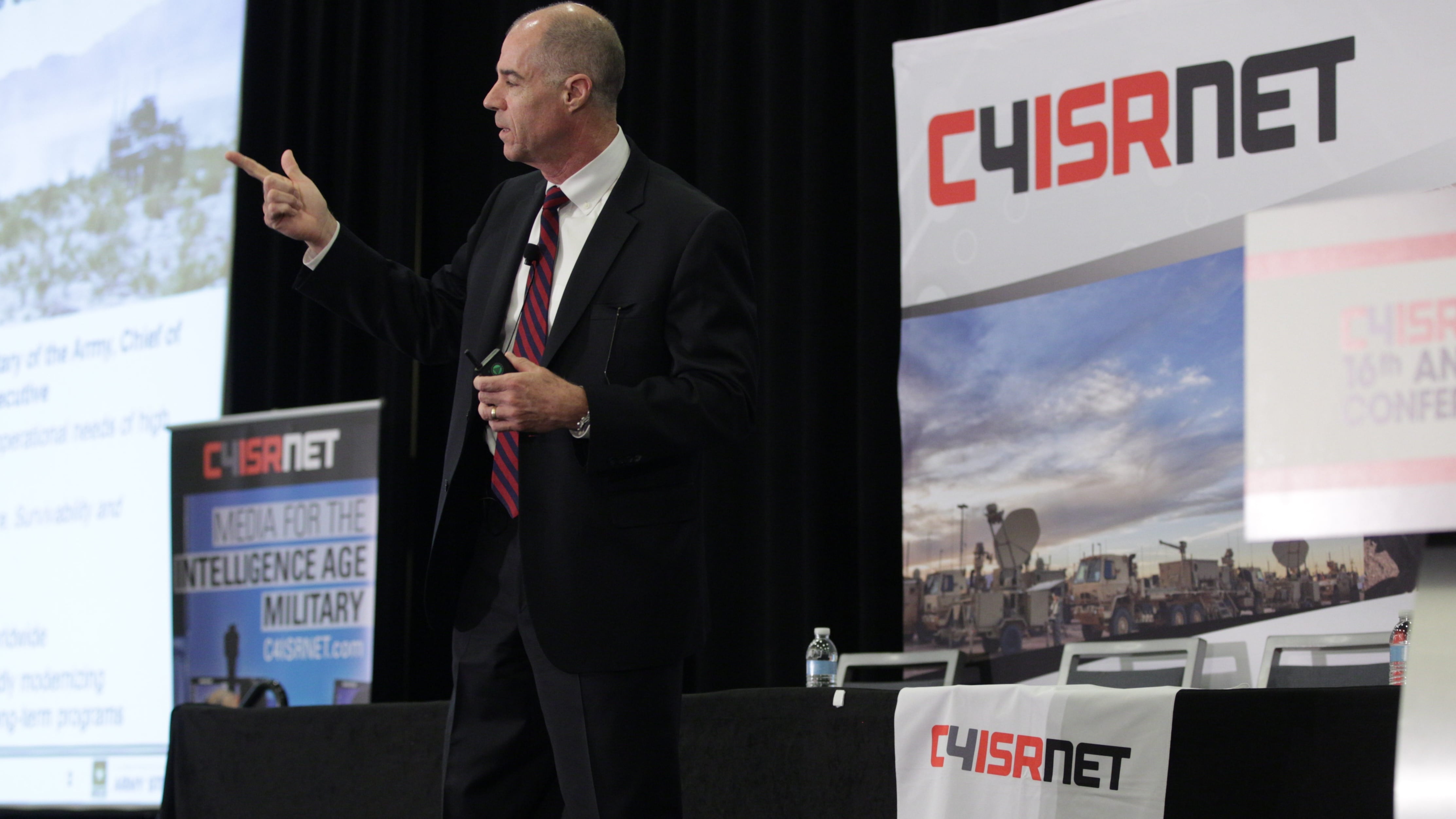WASHINGTON — The Army's Rapid Capabilities Office has sent its near-term electronic warfare capability solution to Europe, and soldiers there will get a chance to put it to the test this summer, said RCO Director Doug Wiltsie.
The office — officially created in August — is designed to zero in on the Army's largest requirements with the intent to deliver capabilities within a one- to five-year horizon. It's part of the service's aggressive overhaul to its troubled procurement system and pushes even beyond acquisition reform outlined in congressional defense policy.
The RCO, at its launch, said it would prioritize developing capability in the areas of electronic warfare; position, navigation and timing; and cyber that were neglected in the counterinsurgency operations of the past 15 years. Now that the Army anticipates battling more near-peer adversaries in contested environments, it is refocusing on ensuring its capability overmatch those possible enemies.
By December, the RCO had approved a strategy for a "phased" way ahead to rapidly prototype electronic warfare capability.
"It was very clear that the strategic gap [in EW] was the ability for NATO and the American participation in NATO to be able to do ground maneuver in a contested environment," Wiltsie told Defense News in an interview at the C4ISRNET Conference on May 3. "So what we are focused on is being able to field a capability that will allow the maneuver force — so think the brigade and below — the ability to ground maneuver in a contested environment."
So the RCO developed a prototype and sent it over to Europe to help soldiers better view the EW picture, Wiltsie said. What is in Europe now is the "phase zero" version, he added. "Phase one will be over in July, and then the last element of it will arrive in October."
The prototype will be tried out in an operational assessment during the Saber Guardian exercise in Romania, Hungary and Bulgaria.
The Army will run another operational assessment in October and then take the information to the RCO’s board of governors for a decision on whether to field the capability to designated units, according to Wiltsie.
The second element in the prototype will have an offensive capability, Wiltsie said.
"Everything looks very, very good," he added. "It’s providing soldiers the ability to understand the electromagnetic spectrum that they are in, are you being jammed, or what other radios/emitters are in your environment."
Feedback from phase zero has so far resulted in a better understanding of what is wanted in a display, what they can visualize and how they can use the information to interpret what the environment looks like, according to Wiltsie. "We are working some better user interfaces with them to allow them to move quicker in understanding what signals are out there," he added.
The next phase, Wiltsie said, will tackle how to integrate the EW prototype onto a vehicle and how troops will use it. "One of the questions that we have to be able to answer to the board is: Could you do this with the existing organizations and troops that you have, or do we need to augment troops in order to be able to do this?"
An element of the EW solution would incorporate cyber capability, Wiltsie said during a speech at the conference, but the RCO is also working with Army Cyber Command on both offensive and defensive capabilities with more of a focus on the defensive side first.
The RCO has delivered an infrastructure solution to cyber forces and is working on a situational understanding capability, Wiltsie said. That capability currently is in source selection, and an award will be made soon.
For position, navigation and timing — or PNT — the RCO is looking at five to seven different technologies "to see which one gives us either the best performance or is the fastest that we can incorporate," Wiltsie said.
The RCO is looking at both mounted and dismounted solutions for PNT because in the European theater the Army has armored brigades, Stryker brigades and infantry combat brigades, so the solution has to work on various platforms within those brigade combat teams, Wiltsie said.
For PNT, "the idea is to spend very little money on a multitude of options to take them to some kind of assessment and then come back to the board and say: ‘We believe this one or these two are the ones that we want to go forward with,' " he noted.
The RCO has also set up an Emerging Technologies Office to understand the art of the possible and what is out there, "which is a huge challenge for us," Wiltsie said. The office will allow collaboration with the Pentagon’s Strategic Capabilities Office, other services’ RCOs, the Defense Advanced Research Projects Agency and the Defense Innovation Unit Experimental.
And it will also allow the office to tap the commercial space and get a sense of innovation occurring there, he said, and identify what technologies could be prototyped for military organizations such as big-data analytics, artificial intelligence, autonomy and machine learning.
Jen Judson is an award-winning journalist covering land warfare for Defense News. She has also worked for Politico and Inside Defense. She holds a Master of Science degree in journalism from Boston University and a Bachelor of Arts degree from Kenyon College.








